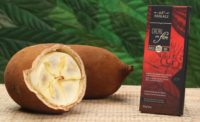Current Euromonitor International projects peg Mexico’s retail confectionery sales at $5.4 billion in 2017, more than a billion dollars gain since 2012. This represents the sixth best retail market for global confectionery sales. It also places Mexico second, exceeded only by Brazil, within Latin America.
No surprise then that European confectionery giant Ferrero announced in early 2012 that it was building its first ever plant in Mexico. Other international confectionery companies would be well advised to take note.
After the fall, the recovery
Despite strong expectations, until recently, candy sales in Mexico have been fairly lacklustre. While sales did not collapse in the wake of the global economic crisis of 2008/2009, retail sales (excluding the impact of inflation and foreign exchange rate volatility) were at best flat through the end of 2011. Moreover, the onset of the credit crunch put an abrupt end to eight consecutive years of strong and steady sales expansion, which Mexico experienced between 1999 and 2007. That sweet period saw a billion-dollar expansion of the confectionery market.
Thankfully, growth started to pick up during 2012 and overall confectionery retail sales have returned to pre-crisis levels of about $4.4 billion. This achievement should help pave the way for continued growth moving forward, provided that industry players seize latent opportunities and actively engage with recession-weary and increasingly wealthy Mexican consumers.
Underlying macroeconomic indicators certainly bode well and should give global confectionery companies food for thought. After falling by more than $500 in real terms from 2008 to 2009, real disposable incomes in Mexico are now back to pre-crisis levels of more than $7,000 per capita in 2012. Moreover, they are slated to approach $7,900 per capita by 2017.
Alongside this, Mexico’s real GDP growth should hover around 4% annually between 2012 and 2007, roughly double the expected annual gains of the United States. Strong economic prospects should, in turn, help to keep Mexico’s unemployment rate below 5%, compared to a corresponding rate of more than 8% across the border to the north.
Sugar confectionery drives future performance
While macroeconomic variables look increasingly sweet in Mexico, confectionery producers will still have to give consumers what they want in order to make strong sales forecasts a reality. As far as individual product categories are concerned, sugar confectionery should continue to see the strongest levels of demand and thus offer the best potential.
Indeed, while constant retail value sales of chocolate confectionery and gum remained below pre-crisis levels in 2012, sales of sugar confectionery reached $1.93 billion, $75 million higher than in 2007. Moreover, overall category sales are forecast to increase a further $460 million to approach $2.4 billion in 2017.
Much of sugar confectionery’s continued sales resilience and dynamism stems from its relative affordability. In 2012, the category’s average retail unit price stood at just under $9 per kilo, compared to just over $14 and $17 for chocolate confectionery and gum, respectively. While average incomes are growing in real terms, many Mexicans remain extremely price-sensitive and will seek out value for money wherever possible.
Alongside price considerations, sugar confectionery will most likely remain the domain of the young, despite the government’s increased attention to country’s escalating obesity crisis. However, products aimed at diabetics are starting to enjoy strong growth, even if they remain very niche.
Mexico is seeing an increased incidence of diabetes amongst its population, with levels estimated at between 10-14%. Official consider this pandemic, which encourage more consumers to seek out low-sugar and sugar-free sweets.






